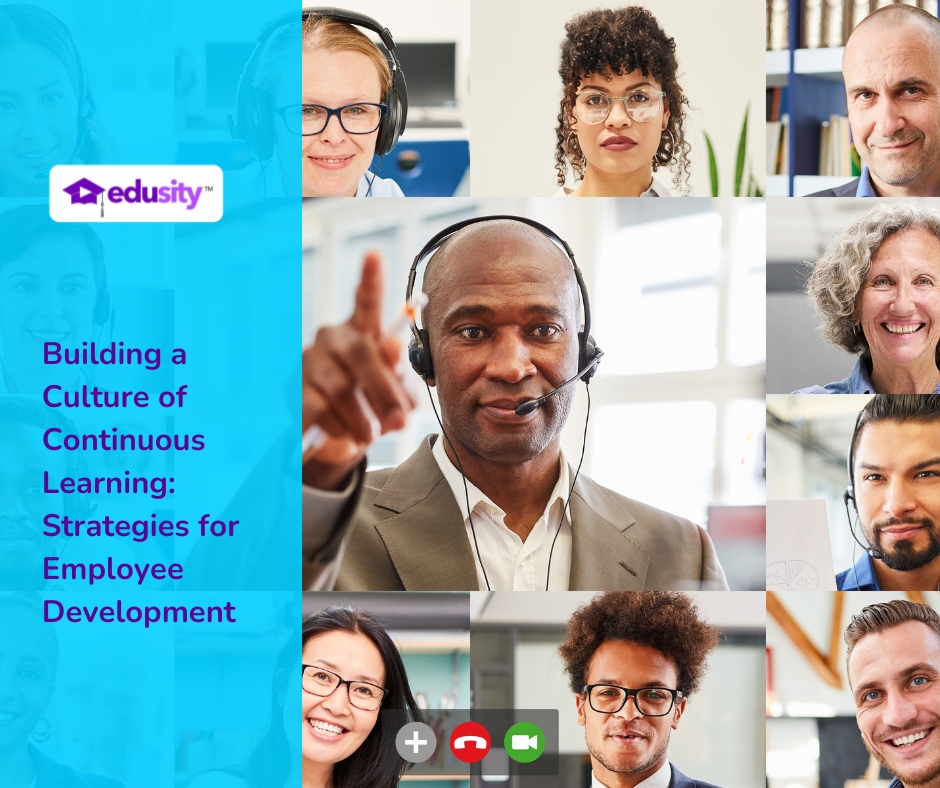
The Importance of Fostering a Culture of Continuous Learning
When we stop learning, we can stagnate and fail to innovate in ways that move our business forward. Instead, create an environment where education is valued and reap these benefits:
- An Adaptable Workforce
Commerce never stands still, and with new technologies, processes, and market dynamics emerging regularly, you need to stay agile to compete. Competitive organizations need employees who can adapt to these changes. Continuous learning ensures that the workforce remains current with the latest trends and is prepared to embrace new opportunities and new ways of thinking.
- Increased Employee Engagement
Encouraging continuous learning sends a clear message to employees that their personal and professional growth is valued. Employees who feel the company has invested in them are more likely to be engaged, committed, and motivated, increasing productivity and retention.
- Innovation and Creativity
A learning-oriented culture fosters innovation and creativity. Employees who are encouraged to explore new ideas, experiment, and learn from their mistakes are more likely to come up with innovative solutions and drive the company forward. Investing in employee development shows your team that you are willing to adapt and change to meet the needs of the company and the people you employ.
- Enhanced Problem-Solving
Equip your employees with a broad skill set and knowledge base to help them solve problems more effectively, make better decisions, and contribute to the organization’s success.
Strategies for Creating a Learning-Oriented Workplace
Mentorship Programs
Knowledge-Sharing Platforms
Implementing knowledge-sharing platforms, such as internal wikis, company discussion boards, informal meetings, collaboration tools, and communication channels, can facilitate the exchange of information and expertise. These platforms allow employees to share best practices, lessons learned, and industry insights. Encouraging employees to contribute to these platforms can create a culture of collaborative learning.
Recognition for Learning Achievements
Recognizing and celebrating learning achievements can motivate employees to continue their educational journey. This can be done through awards, certificates, or even small prizes. Publicly acknowledging employees who invest in their development sends a powerful message that the company values learning.
Regular Training and Workshops
Provide opportunities for formal training and workshops, including in-house training sessions, talks by special guests, online courses, or external programs. Encourage employees to attend relevant workshops and seminars to acquire new skills and knowledge. You may also wish to offer financial support or flexible schedules to facilitate attendance.
Feedback and Performance Reviews
As part of your usual management performance reviews, incorporate employee learning goals to ensure that professional development is a continuous and integrated part of an employee’s growth trajectory within the company.
Cross-Department Collaboration
Promote cross-department collaboration by encouraging employees to work on projects outside their usual roles. This broadens their skill set and fosters a culture of curiosity and learning. Teams collaborating with colleagues from different backgrounds often find innovative solutions to complex problems.
Tips for Overcoming Common Challenges
Resistance to Change
One of the most common challenges in building a culture of continuous learning is overcoming resistance to change. Some employees may be apprehensive about new learning initiatives. To address this, it’s essential to communicate the benefits clearly and involve employees in the decision-making process. Listening to their concerns and managing them can ease the transition.
Lack of Time
Employees often cite a lack of time as a barrier to learning. To overcome this challenge, consider incorporating learning into the regular workflow. Encourage employees to set aside dedicated time for learning and make it part of their daily routines. This can be achieved by offering short, focused learning opportunities that fit into busy schedules.
Lack of Resources
Limited resources can be a barrier to implementing a culture of continuous learning. Consider leveraging cost-effective solutions such as online courses, webinars, and open-source educational materials to address this. Edusity’s enterprise training platform can reduce onboarding costs and increase profitability.
Measurement and Evaluation
It’s important to measure the impact of learning initiatives. Implementing key performance indicators (KPIs) related to learning and development can help assess the effectiveness of these programs and make it easier to justify further spending on employee development. Regularly collect employee feedback to understand what is working and what needs improvement to refine and adapt the programs to their evolving needs.
Leadership Support
Building a culture of continuous learning requires the active support and participation of leadership. If leaders are not fully on board with the idea, getting buy-in from the rest of the organization can be challenging. Ensure that managers and section leaders are advocates for learning and actively engage in their ongoing development.
Tailoring Learning Initiatives
Employees have diverse learning needs and preferences. To address this, offer various learning options and allow employees to choose the best methods for them. Personalized learning plans can ensure that individuals receive the necessary training and development. Edusity allows you to customize training goals and track your team’s progress.
Take a Long-Term View
Continuous learning is a long-term endeavor. It’s important to emphasize the importance of lifelong learning and a growth mindset.
By providing opportunities for employee development, companies can adapt to change, enhance employee engagement, foster innovation, attract and retain top talent, and improve problem-solving capabilities. Implementing mentorship programs, knowledge-sharing platforms, recognition for learning achievements, and other strategies can create a learning-oriented workplace. With the right approach, organizations can cultivate a culture of continuous learning that benefits employees and the business.
Angela Britcher
Latest posts by Angela Britcher (see all)
- Boost Your Teaching Career with Online Courses - May 16, 2024
- 7 Reasons to Use an LMS for Compliance Training - May 9, 2024
- Teach for Free with Edusity: Empowering Educators Worldwide - April 25, 2024
